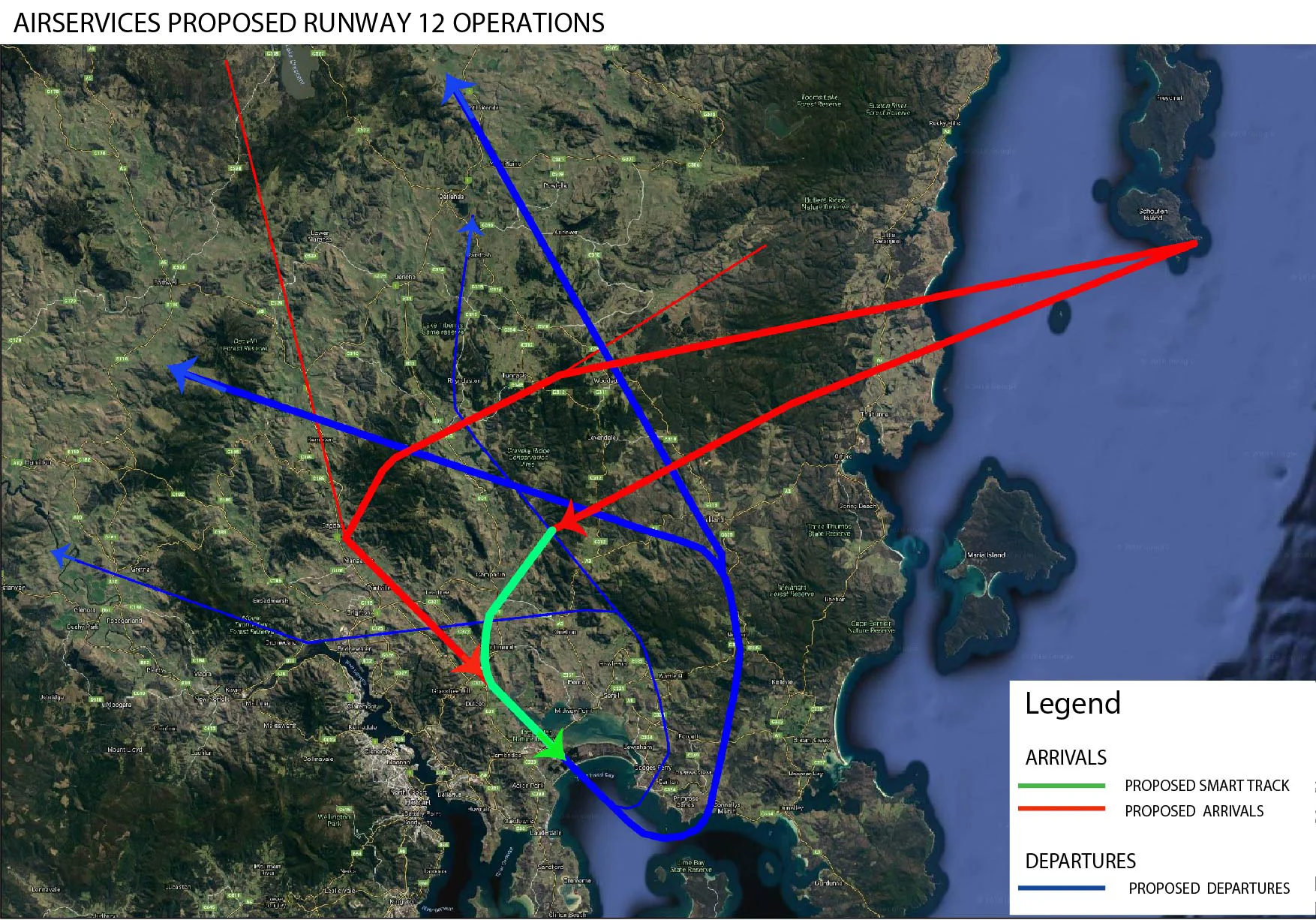The Hobart flight path review is at a critical point, with the submission period about to close on Monday 7 January 2019.
Unfortunately, Airservices has shown that it is not prepared to work with community stakeholders to develop workable flight path solutions and leverage a combination of local knowledge and technical expertise.
Instead it has presented a single extremely complicated design, developed without community stakeholder input, and expects community members to provide verbal and written ‘feedback’ without the opportunity for discussion about feasibility or the costs and benefits of different options. The message from Airservices is that it has decided on the best route, and the task now is to inform the community of its decision.
We believe that Airservices should have consulted with community stakeholders about flight path design from the outset in accordance with its own Procedures Design Manual (ATS-PROC-0082) which states that, for designing instrument flight paths:
The key to delivering a successful outcome is consultation with stakeholders. For this reason it can be expected that consultation may be required at every step on the way to completion.
We further believe that there are workable SID/STAR flight path alternatives that would provide less overall impact on communities, and avoid unnecessary overlying of important tourism assets such as Schouten Island, Maria Island and Marion Bay.
Prior to the Airservices sessions, community members from Murdunna, Dunalley, Connelly’s Marsh, Primrose Sands, Bream Creek, Kellevie and Boomer Bay pooled local knoweldge to develop alternative flight paths. These are shown below.
It is not claimed that these alternatives are operationally viable, or that the residents who worked on them represent the views all who live in these communities. But communities should have been provided the opportunity to discuss suggestions like these with Airservices technical staff and others who may be unintentionally affected, or hold different views.
Unfortunately Airservices’s so-called ‘consultation’ sessions excluded these suggestions from being presented.
WHAT YOU CAN DO
As both its own procedures and the Aircraft Noise Ombudsman recommended, Airservices designers must work with community stakeholders to develop operationally viable design alternatives that minimise noise and visual impact on communities and tourism assets.
Tell Airservices that they have not genuinely consulted or worked with community stakeholders to develop viable alternatives that would meet the needs of all stakeholders. Airservices designers should engage with community stakeholders to openly and collaboratively design viable flight path alternatives, leveraging local knowledge to achieve the best outcome for all.
You can provide your feedback until 7 January 2019 via the Online Feedback Form or by email to taniaparkes@taniaparkes.com.au
Community-developed alternatives
Move the proposed waypoint over Schouten Island inland and as far west as possible, removing the east coast routes over water, to reduce impact on newly overflown communities and important tourist assets
Smooth the ‘corner’ of the standard Runway 30 arrival path at Dunalley to reduce excessive noise of aircraft braking and turning
3. Move the proposed Runway 12 jet departure path to the north of Primrose Sands to align with the infrequently used light aircraft departure path to avoid newly overflown communities
4. Implement an additional Runway 12 departure to the west of the airport to improve efficiency and reduce noise impact on newly overflown communities at Primrose Sands and Connelly's Marsh





